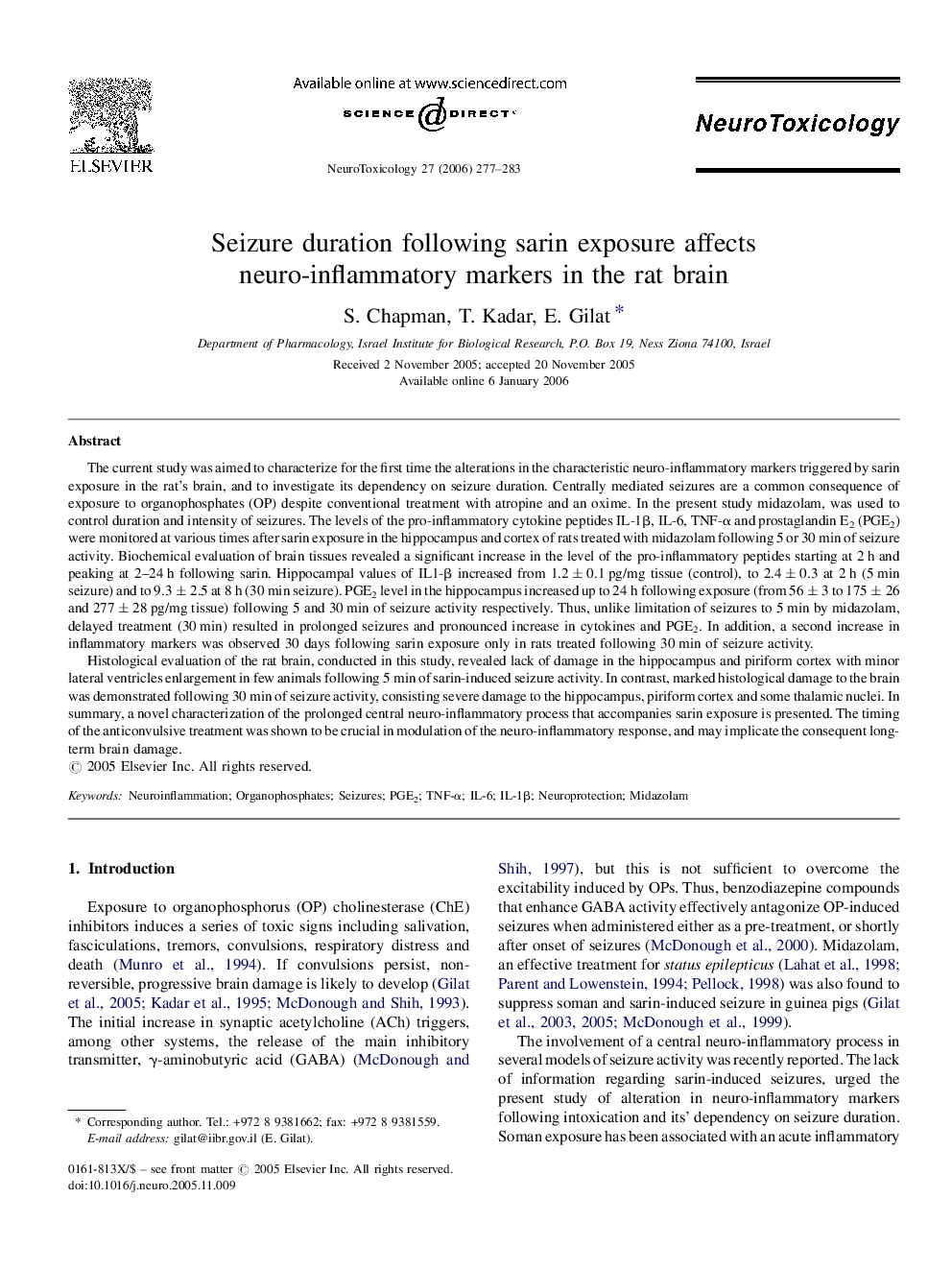| Article ID | Journal | Published Year | Pages | File Type |
|---|---|---|---|---|
| 2590274 | NeuroToxicology | 2006 | 7 Pages |
The current study was aimed to characterize for the first time the alterations in the characteristic neuro-inflammatory markers triggered by sarin exposure in the rat's brain, and to investigate its dependency on seizure duration. Centrally mediated seizures are a common consequence of exposure to organophosphates (OP) despite conventional treatment with atropine and an oxime. In the present study midazolam, was used to control duration and intensity of seizures. The levels of the pro-inflammatory cytokine peptides IL-1β, IL-6, TNF-α and prostaglandin E2 (PGE2) were monitored at various times after sarin exposure in the hippocampus and cortex of rats treated with midazolam following 5 or 30 min of seizure activity. Biochemical evaluation of brain tissues revealed a significant increase in the level of the pro-inflammatory peptides starting at 2 h and peaking at 2–24 h following sarin. Hippocampal values of IL1-β increased from 1.2 ± 0.1 pg/mg tissue (control), to 2.4 ± 0.3 at 2 h (5 min seizure) and to 9.3 ± 2.5 at 8 h (30 min seizure). PGE2 level in the hippocampus increased up to 24 h following exposure (from 56 ± 3 to 175 ± 26 and 277 ± 28 pg/mg tissue) following 5 and 30 min of seizure activity respectively. Thus, unlike limitation of seizures to 5 min by midazolam, delayed treatment (30 min) resulted in prolonged seizures and pronounced increase in cytokines and PGE2. In addition, a second increase in inflammatory markers was observed 30 days following sarin exposure only in rats treated following 30 min of seizure activity.Histological evaluation of the rat brain, conducted in this study, revealed lack of damage in the hippocampus and piriform cortex with minor lateral ventricles enlargement in few animals following 5 min of sarin-induced seizure activity. In contrast, marked histological damage to the brain was demonstrated following 30 min of seizure activity, consisting severe damage to the hippocampus, piriform cortex and some thalamic nuclei. In summary, a novel characterization of the prolonged central neuro-inflammatory process that accompanies sarin exposure is presented. The timing of the anticonvulsive treatment was shown to be crucial in modulation of the neuro-inflammatory response, and may implicate the consequent long-term brain damage.
